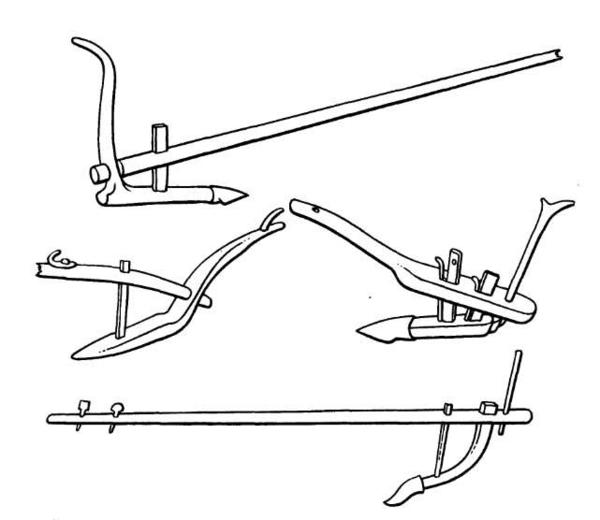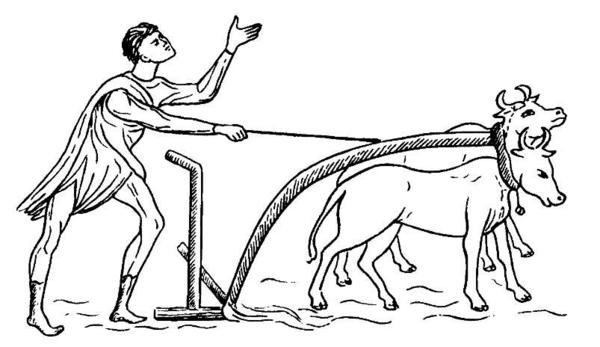Ralo or oralo was how ancient Slavs called their plowing tools. They were used to loosen up the soil before sowing seeds. At the beginning, the ralos were made from young trees with arched roots. They were barely finished: it was enough to give the lower part of the root the shape of a hook that could loosen up the soil. In the 10th century, handles to manage the primitive instrument were added, as well as metallic covers that were fixed at the end of the hook.
Ralo
Время создания
II-IV centuries
Техника
Wood, manual finishing
Коллекция
Выставка
3
Открыть в приложении#1
Ralo
#2
#5
The metallic cover had the shape of a broad blade with a slightly pointed lower part that was fixed on the plow with a plug and a nail or a stud. The length of such cover could reach 22 centimeters, depending on the type of the instrument and the depth that it had to reach. The width of the cover ranged between 8 and 12 cm.
#3
Various types of ralos. The one depicted below the others is a sledgeless plow, and the other ones have sledges. Source: agriculturaurbana.space
#7
By the type of the working part, ralos can be divided into two groups. The instruments with a sledge had a horizontal metallic cover that looked like a sledge. Such plows penetrated deeply into the soil and loosened it up if there were no stones and no stubs from trees chopped down.
The ralo was steered by a long wooden beam into which draught animals (horses or oxen) were harnessed. If the instrument was light and the soil was soft, it could work with only one animal; in other cases, the plowing was done with two animals. The plowman walked behind the ralo, holding its handles, directing the instrument and controlling the depth of plowing.
#4
Plowing with a ralo: a fragment of the miniature from Words by St. Gregory of Nazianzen, 9th century.
#8
Later on, ralos were substituted by plows on wheels, more complex and more durable instruments that not only could loosen the upper layers of the soil but also turn its deeper layers. After such plowing, the soil became soft and saturated with air, and the plants grew well on it.
#9
The ralos from the Bryansk Ancientry collection were made in the 3rd and 4th centuries A. D. They had sledges but no handles or, probably, their handles have not survived until now.
The instruments were found in the summer of 1964 near the village of Novinsky in the Bryansk region, not during archaeological excavation but by chance, at the fringe of the forest, under a layer of peat.
#10
Bryansk State Regional Ethnography Museum
читать дальшескрыть
00:00
00:00
1x
Ralo
Время создания
II-IV centuries
Техника
Wood, manual finishing
Коллекция
Выставка
3
Открыть в приложении
Поделиться



